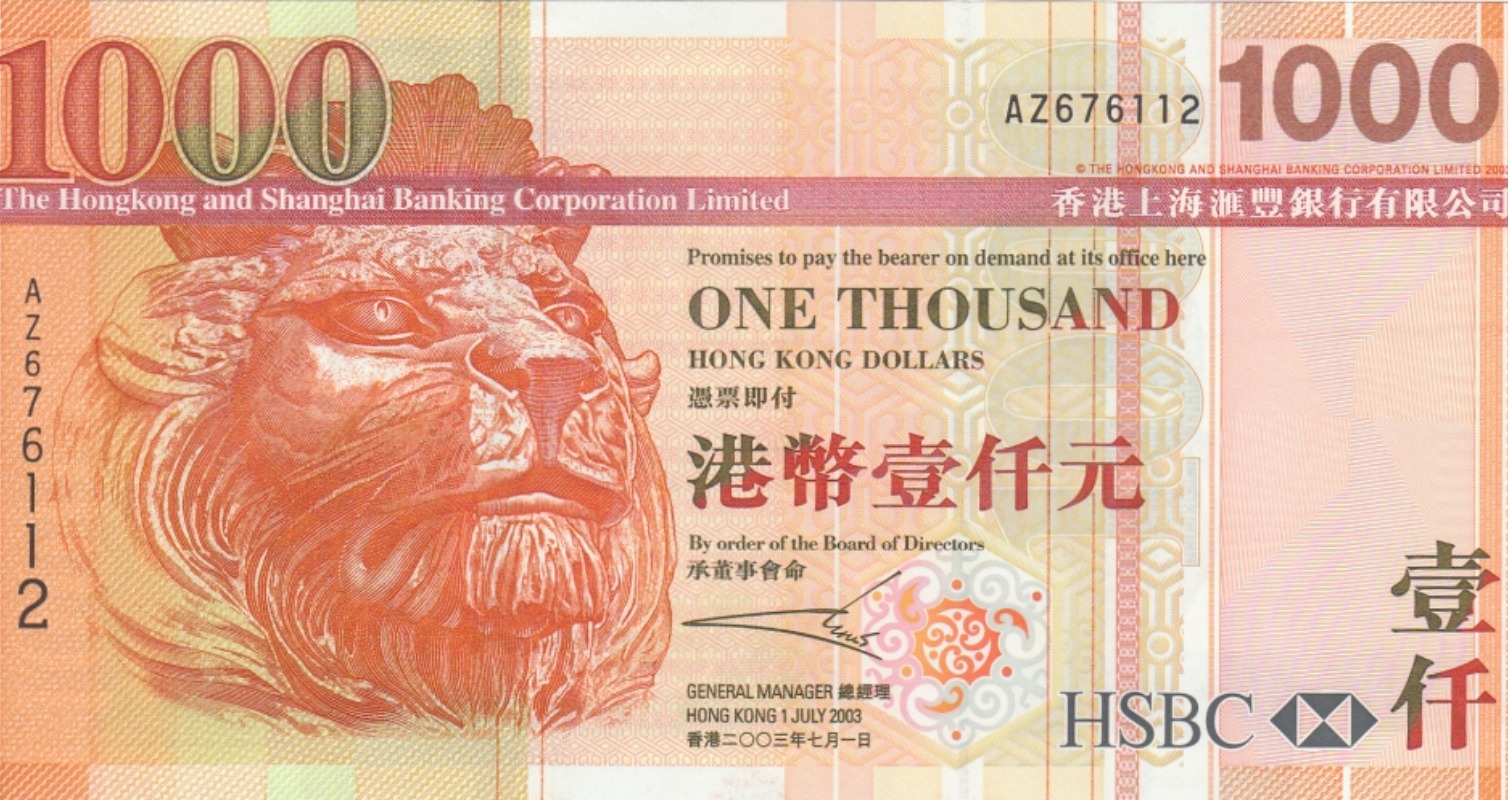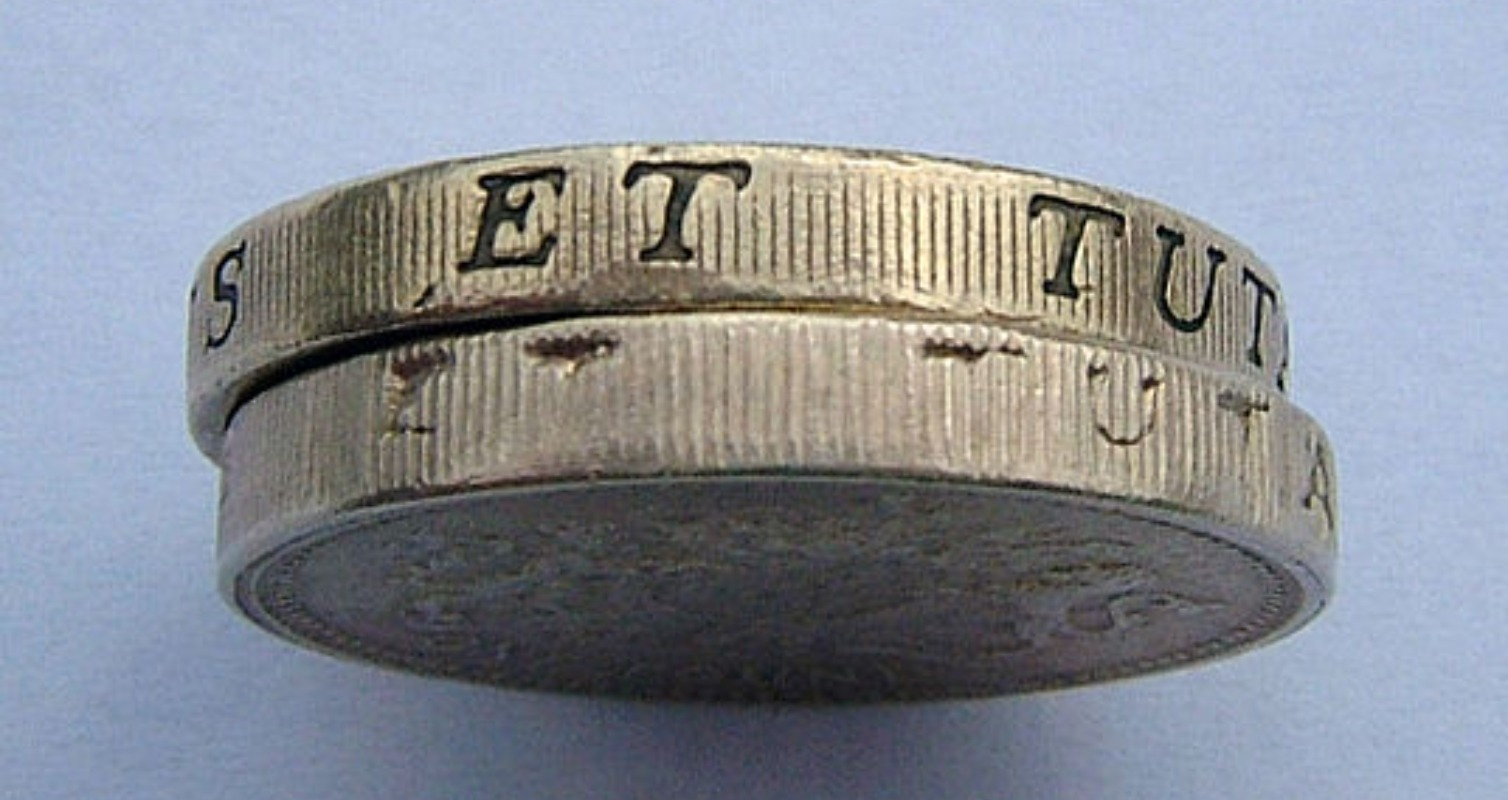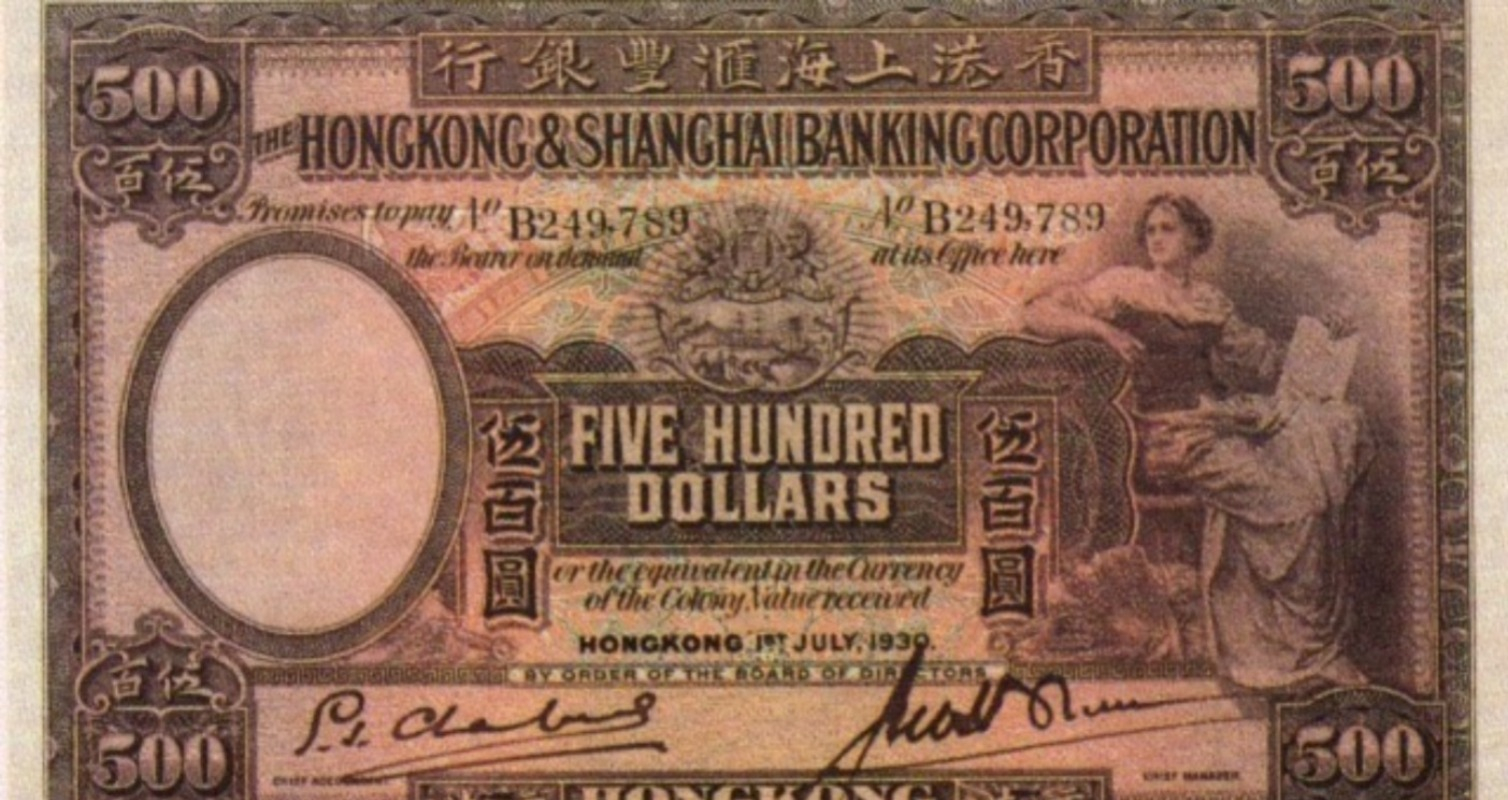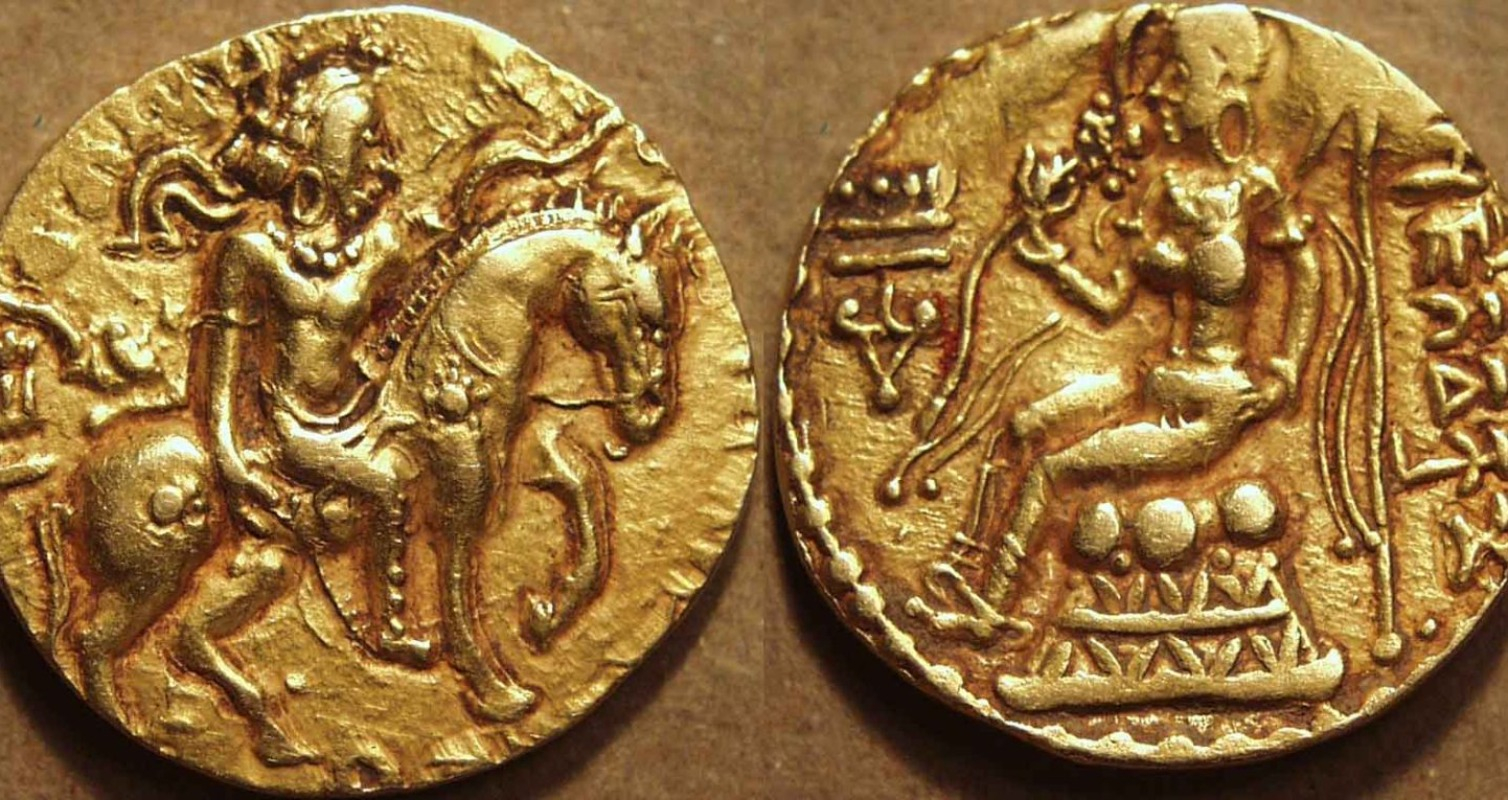Numismatics is the study or collection of currency, including coins, tokens, paper money, and related objects. While numismatists are often characterized as students or collectors of coins, the discipline also includes the broader study of money and other payment media used to resolve debts and the exchange of goods.
Blog

Security Features of Hong Kong Bank Notes
The following security features are incorporated into genuine Hong Kong banknotes:
- Paper: It is made of 100% cotton fibre, which doesn’t fluoresce under ultraviolet light.
- Polymer: The ten-dollar banknotes are made of polymer, and have a transparent panel.
- Watermarks: The watermarks are incorporated during the paper manufacturing process. They can be viewed equally well from either side of the note. The images are multi-toned and sharp, and do not show up when placed under ultraviolet light.
- Security thread: A straight metal thread is embedded in the note. It can be viewed equally clearly from either side of the note.
- See-through features: When the note is held up to the light, the specially designed color patterns printed on the front and back will be seen to be exactly aligned with each other.
- Intaglio printing: The main images of the notes are printed by an intaglio printing process which deposits a large quantity of ink on the paper thus giving the note an embossed feel. The fine lines of these images are clear and sharp.
Adopted from Hong Kong Monetary Authority
Security Features of New Series Other Articles

Circulating Coins
For modern coins in general circulation the most common method of protection from forgeries is the use of bi-metallic coins, made of two metals of different color, which are difficult to counterfeit at low cost.
When the euro was introduced into Europe there were initially very few counterfeits, however the number increased massively as time went by. The high and increasing number of fake euro coins in circulation led to the creation of a Technical and Scientific Center for the coordination of technical actions to protect euro coins against counterfeiting.
It was estimated that 3.04% of all UK £1 coins in circulation are counterfeit. Between 2002 and 2006, approximately 400,000 counterfeit euro coins were removed from circulation.
Other Articles

Banknote at Vending Machine
Banknote usage at Vending Machine offering users a convenient alternative to coin payments. Here’s an overview of how banknotes are typically used in vending machines:
- Banknote Acceptance: Modern vending machines are equipped with bill validators that can accept various denominations of banknotes. In the United States, for example, these machines commonly accept 1,1,5, 10,andsometimes10,andsometimes20 bills. The capability to accept different denominations can vary depending on the machine’s settings and intended use.
- Inserting Banknotes: To make a purchase, you insert a banknote into the designated slot on the vending machine. The machine uses sensors and rollers within the validator to examine the bill for authenticity, checking factors like size, color, opacity, and magnetic properties to ensure it is genuine and not damaged or counterfeit.
- Transaction Processing: Once a bill is accepted, the machine credits the amount towards the purchase. If the inserted money exceeds the cost of the item, the machine calculates and provides change, which could be in the form of coins or, in some advanced machines, smaller denomination bills.
- Change Giving: Vending machines that accept banknotes usually have a coin changer for giving back the correct amount of change. Some newer models may also give change in the form of banknotes if they are stocked with them and the software supports this feature.
- Advantages and Challenges:
- Advantages: Accepting banknotes increases the flexibility of payment options, allowing purchases for higher-priced items without requiring users to carry exact change.
- Challenges: These include potential issues with bill jams or misreads, requiring regular maintenance to clear out accumulated dust and debris. Additionally, there’s always a risk of encountering counterfeit bills, though modern validators are quite sophisticated in detecting them.
- Integration with Digital Payments: Many contemporary vending machines are also integrating digital payment methods alongside traditional banknote and coin mechanisms. This includes support for contactless credit cards, debit cards, mobile wallets, and QR code-based payments, reflecting a trend towards cashless transactions.
Despite the rise of digital payment options, banknote usage remains a popular choice among vending machine users, providing a straightforward and accessible method for purchasing goods from vending machines.
Other Articles

Coin usage at Vending Machine
Using coins in vending machines is a common practice that allows for quick and convenient purchases. Here’s an overview of how coin usage typically works in vending machines:
- Coin Acceptance: Most vending machines are designed to accept a variety of coins, including denominations like pennies, nickels, dimes, quarters in the United States, or equivalent coins in other countries. Some modern vending machines may also accept larger coins or tokens specific to certain locations or organizations.
- Payment Process: To make a purchase, you simply insert the required amount in coins into the machine. The machine displays the amount entered and the remaining balance needed to complete the transaction. Once the correct amount is inserted, the selected item is dispensed.
- Change Giving: If more money than necessary is inserted, the vending machine calculates and provides change using the available coins it has. This could include returning a combination of quarters, dimes, nickels, and pennies depending on the amount of change owed.
- Modern Features: Many newer vending machines now incorporate digital payment options such as credit cards, debit cards, and mobile payments, reducing the need for coins. However, coin mechanisms remain a vital feature for those preferring traditional payment methods or in situations where digital payment options are less accessible.
- Maintenance and Security: Operators regularly service vending machines to ensure that the coin mechanisms work correctly and securely. This includes cleaning coin slots, checking for coin jams, and ensuring the security of the coin storage area to prevent theft.
Despite the increasing popularity of cashless payment solutions, coin usage remains an essential aspect of vending machine functionality, catering to users who prefer or rely on cash transactions.
Other Articles

Vend operator liability lower
The sluggish changeover to chip credit cards by U.S. retailers hasn’t gone unnoticed by criminals. It’s estimated that counterfeit-card fraud will rise to $4.5 billion in 2016, according to researcher Aite Group, as cybercrooks increase their efforts before all merchants and banks comply with the more secure technology.
In view of this, Visa said it is simplifying its equipment-certification process and changing its chargeback policies to reduce liability faced by merchants, including vending operators, who haven’t yet moved to accept chip cards. Effective July 22, Visa will block all U.S. counterfeit-card fraud chargebacks under $25. And starting in October, it will allow banks to charge back only 10 counterfeit transactions per account, and will require them to assume liability for all transactions thereafter. The blocks will remain through April 2018.
These two changes will significantly reduce the number of chargebacks that merchants are seeing, Visa predicted. Following these changes, Visa claims merchants can expect to see 40% fewer counterfeit chargebacks, and a 15% reduction in U.S. counterfeit fraud dollars being charged back. The policy updates are also designed to reinforce the issuer’s responsibility to detect quickly and act upon counterfeit fraud.
The National Automatic Merchandising Association said Visa’s new policy will alleviate the impact that fraudulent charges have on vending operators, who previously were bearing the cost.

Other Vending Machine Applications

Free Snack Vending Machine
What would you do for a free bag of snack? Would you press a button 100 times for Aussie rice snacks? How about 1000? OK, 5000? Clemenger BBDO created a free snack vending machine to test how far humans would devolve into lab rats for the paltry reward of a single bag of snacks – asking them to bow to the vending machine and do various physical exercises. Let’s watch!
Interesting facts about Snacks
- Coca-Cola’s scientists carefully calibrate Coke’s flavor to be distinctive yet “forgettable” because our tongues get tired of stronger, more recognizable tastes.
- Cadbury’s scientists tested 61 different formulas to come up with the perfectly addictive Cherry Vanilla Dr Pepper.
- Commercially produced bread is heavy on salt because it keeps the machines from getting gummed up.
- Nutella was created following chocolate shortages after WWII. After World War II, there was a widespread shortage of cocoa, and a pastry maker from Piedmont, Italy created this sweet spread made from hazelnuts, sugar, and just a little bit of that hard-to-find cocoa. The hazelnuts and sugar helped extend the cocoa so that people could enjoy that chocolate flavor during a time of shortage.
- Bubble gum is pink for a simple reason. After adding a little latex to their original formula, the chewing gum was able to last a long time. But unfortunately, the gum was an “unappetizing grey” color, so the workers scrambled to make their new bubblegum invention a more pleasing color. The only dye available was bright pink, and that’s how it was originally sold in stores and became a chewy tradition.
- Jelly Bellies have a presidential history. President Reagan fell in love with these sugary beans when he was looking for a substitute after he quit smoking. Jelly Belly, according to Atlas Obscura, quietly supplied the then-governor with monthly shipments of jelly beans, and they provided three-and-a-half tons of patriotic jelly beans (in cherry, coconut, and blueberry flavors) to his presidential inauguration.
Source
- BuzzFeed
- Live Play Eat.com
- Mashed.com
Other Vending Machine Applications

How to Keep Customers Happy and achieve booming Vending Machine Sales?
When a customer has an issue with the machine, who can they turn to for complaint? For their money back? For the product that got stuck in the machine? They sometimes turn their frustration towards the machine and cause damage not only to the machine but to the area around the machine, like scratching the floor or damaging walls. This frustration can mount to a decrease in vending machine sales.
Therefore, it is important to Keep Machine Working. If customers are experiencing repeat problems, such as the bill validator will not take their dollar bills, then fixing the problem is essential to keep those customers coming back to your vending machine and achieving great vending machine sales. The more problems people have with vending machines, the less likely they are going to be buying product from vending machines.
Although keeping machines operating properly and clean takes time, it is time well spent in order to attract people to come to the machine and make purchases. Even if it takes replacing a vending machine altogether (as long as it is cost effective to do so), giving customers that convenience experience goes a long way in increasing happiness and increasing vending machine sales.
Also, respond to complaints quickly. The best way is to have at least some contact information on the machines at all times. Phone number, email address, even a Twitter handle could offer customers a chance to contact vendors and report any issue. During off hours, vendors can also use call centers to handle complaints. The faster vendors deal with complaints, the better customers feel, and better numbers of vending machine sales. They feel validated in that their input is important and that their business is appreciated. Happy customers means repeat customers; therefore, responding quickly to their complaints is essential to give them a great customer experience.
Keep Good Relations with the Point of Contact (POC). For office buildings, apartments, hospitals, etc, there will always be a POC for vendors and route drivers. This person will receive complaints from customers, take down names for people needing refunds, and take notes of problems people have had with the machines. They are essentially working for the vendor for free.
Keeping a good relation with this person will make their experience with a vendor’s company much better. If one day, a vendor sees that the person is upset because they have spent too much time receiving complaints about a machine, vendors should try giving them a soda or snack as a means of saying thank you. A little gratitude can go a long way, and vendors will want their POCs on their side because they can be great references for larger accounts in the future and increase revenue from vending machine sales.
Other Vending Machine Applications

Pop-Up Nikefuel points Vending Machine
In a clever marketing stunt, Nike has installed a pop-up Nikefuel Points vending machine that only accepts its NikeFuel points as payment.
The machine, which will move between a series of undisclosed locations, is stocked with Nike hats, socks and shirts. People with Nike+ device can use the points they accumulated on their device that day to pay. Normally, Nike+ owners can only use the points to track their fitness progress.

About NikeFuel:
NikeFuel was part of Nike’s attempt to motivate people to be more active by gamifying physical activity through the use of technology. Introduced around 2012, NikeFuel allowed users to earn points based on their physical activity levels, which could then be tracked and shared via the Nike+ platform. The idea behind NikeFuel was to provide a simple, fun way for individuals to measure and compare their activities regardless of the type of exercise they were doing.
Key Features of NikeFuel:
- Activity Tracking: Users earned NikeFuel points for all sorts of movements and exercises, from walking and running to dancing or playing sports. The points were calculated using an algorithm that took into account factors like the type of activity, duration, and intensity.
- Motivation and Goals: The system encouraged users to set daily or weekly goals for earning NikeFuel points, aiming to motivate them to stay active and continuously challenge themselves.
- Social Sharing and Competition: NikeFuel integrated social sharing features that allowed users to connect with friends, share achievements, and compete against each other for the highest NikeFuel scores. This community aspect helped increase engagement and motivation.
- Integration with Devices: Initially, NikeFuel points could be earned through devices such as the Nike+ FuelBand, a wrist-worn fitness tracker. Over time, the functionality was also incorporated into other devices and apps, making it accessible to a broader audience.
Despite its innovative approach, Nike decided to discontinue support for NikeFuel and the FuelBand in the mid-2010s, shifting focus towards integrating activity tracking directly into their running and fitness apps without the proprietary NikeFuel point system. However, the legacy of NikeFuel lives on in the form of continued innovation in fitness tracking and the ongoing effort to find new ways to engage and motivate people to lead healthier, more active lives.
Other Vending Machine Applications

Sweat Activate Vending Machine
Most drink vending machines are designed to dispense refreshment with payment, but Gatorade’s Sweat Machine operates a little differently.
The Sweat Machine was set up at various park locations in Toronto, calling out to runners, bikers and other active individuals as they passed by. Gatorade’s machine asked people to place their hand on a panel in order to determine if they were sweaty enough to deserve a drink. If not, the machine challenged people to #KeepSweating by performing a few more squats, burpees or a jog on the spot.
With interactive stunts like these, Gatorade is beginning a shift in focus from celebrating professional athletes to rewarding ordinary people who are inspired to keep active every day.

Fun facts about sweat
- Everyone has between 2 and 5 million sweat glands spread across the body.
- The fitter you are, the sooner you may start to sweat during exercise. This is because your body recognizes the need to cool you off faster so you can work out longer.
- Women have more sweat glands than men, but men’s sweat glands actually product more sweat than women’s.
- During intense exercise in the heat, athletes can sweat off 2 to 6 percent of their body weight.
- There is a difference between stress sweat and regular sweat. Regular sweat is comprised of water, sale and potassium, and helps cool the body down as it evaporates. Stress sweat is released by a different gland and is comprised of fatty acids and proteins. Stress sweat doesn’t evaporate as quickly as regular sweat and can develop an odor when it combines with bacteria on the skin.
- Some people can sweat blood. Other people have been found to sweat various colors like green, blue, black, and more.
Source
Other Vending Machine Applications












